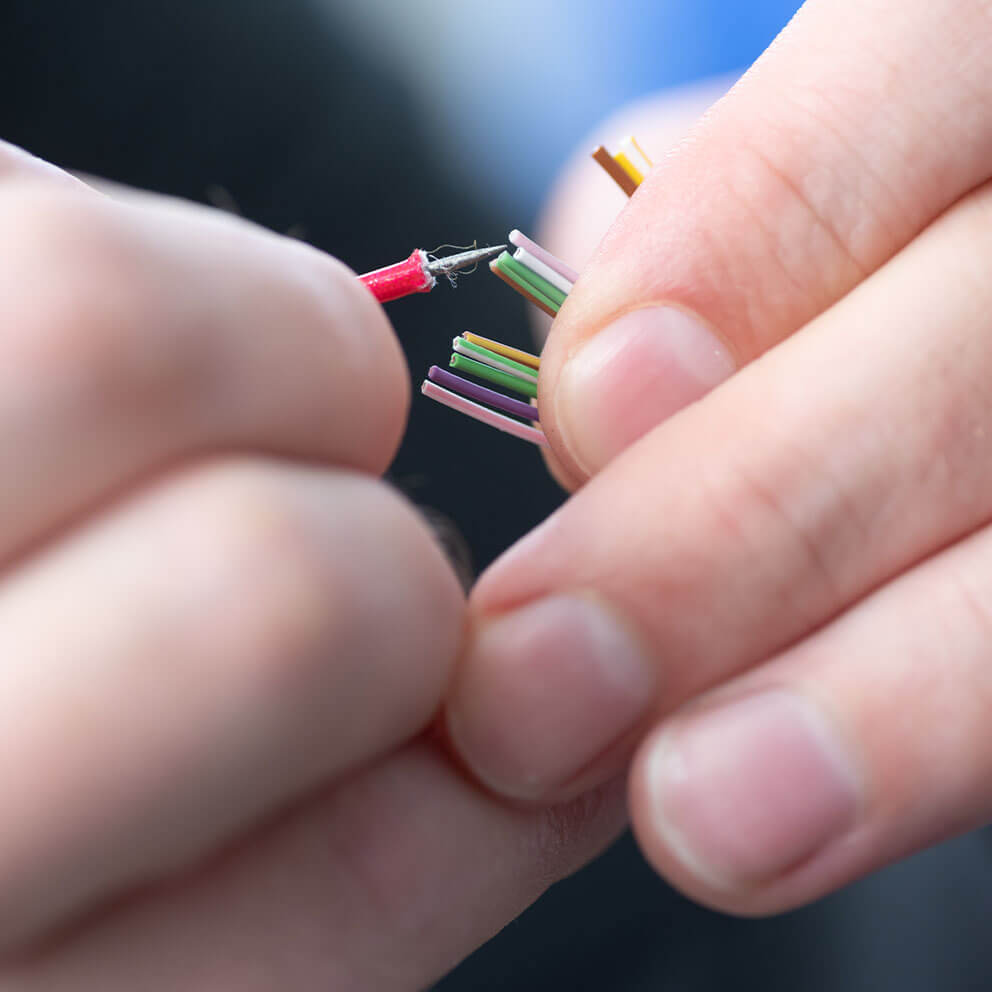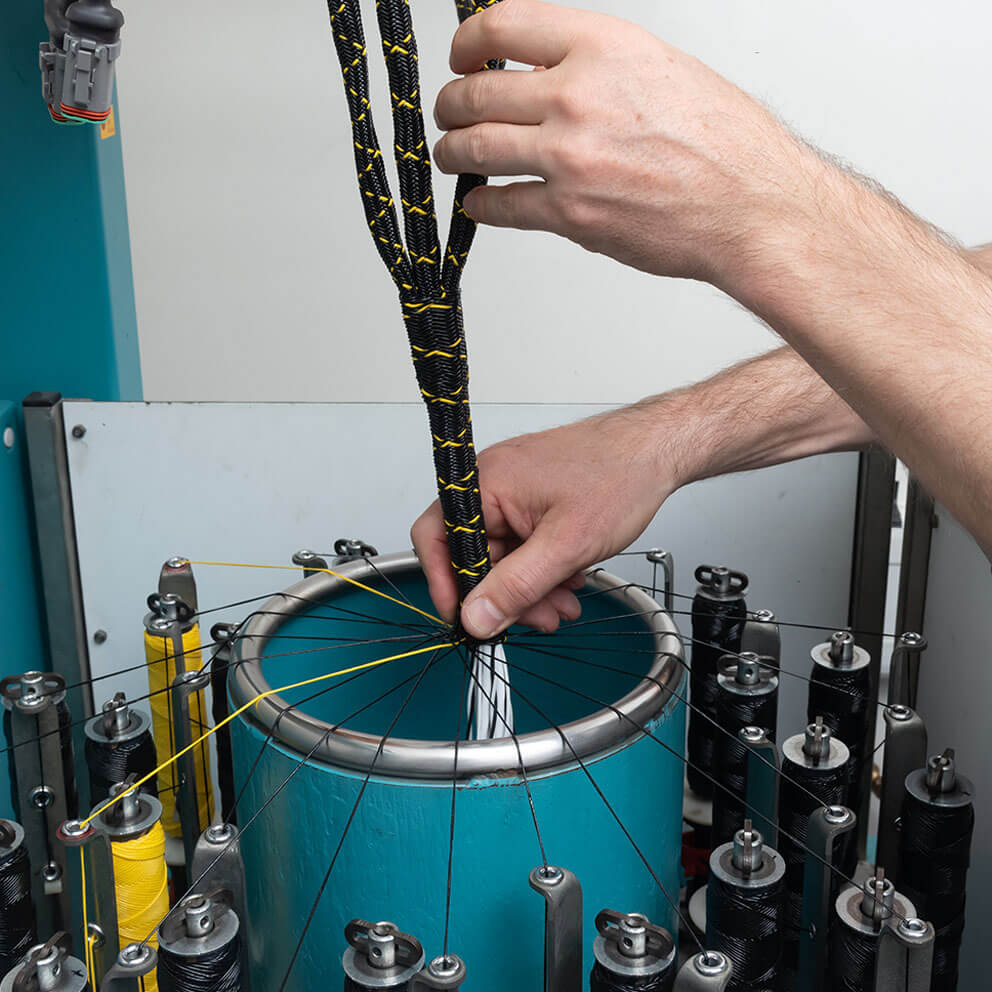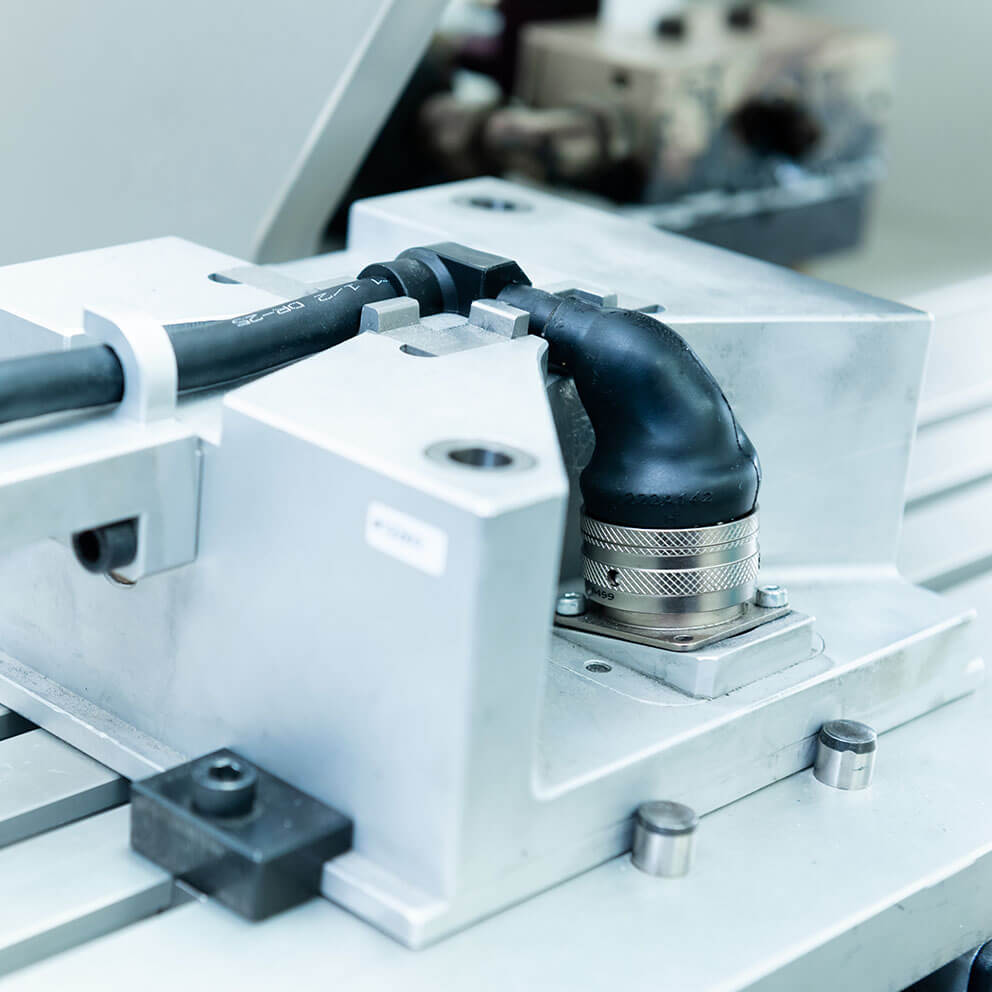85649 Brunnthal
Germany
Tel.: +49 89 / 629844-0 E-Mail: mail@eltec-gmbh.de
Web: www.eltec-technology.com

We can process a wide variety of crimp contacts and cable lugs at all our production sites. Depending on the contact type, cross-sections of up to 240 mm² are possible. Here we use electropneumatically operating crimping presses. Each individual crimp is automatically monitored and logged using numerous parameters, including tool wear. An important element of quality assurance is the control of the crimping force. Piezoelectric force sensors provide measured values that are compared with validated reference specifications. This makes the process absolutely reproducible and the quality of the crimp connections increases.
The selection of our crimping processes is based on the typical requirements of IPC-WHMA-A-620 according to class 2 or 3. In this way, we ensure a continuously high crimp quality that is fully documented.
Take advantage of our decades of experience in the production of braided and thus particularly resistant cables and cable harnesses. Depending on the task and industry, we use different braids made of a wide variety of materials, supplemented by insulating braids, hoses and seals.
Braids offer ideal protection, for example, when
Likewise, when cables are exposed to aggressive substances, such as chemicals, oil and salt water, or environmental influences such as UV radiation and ozone. Thermal braids are used for extreme temperatures, and special shielding braids are used for radiation influences (EMC protection). Braided cables are also much easier to install.


Take advantage of our many years of expertise in low-pressure injection molding based on the hotmelt adhesive Technomelt® (formerly Macromelt®). With this thermoplastic potting process - also known as hotmelt molding - we produce customized connectors and other project-specific components that are characterized by optimum functionality, high load-bearing capacity and durability. The Technomelt® we use is based on amorphous polyamides. On the one hand, these provide excellent adhesive properties, making the overmolded components extremely waterproof (up to IP68). On the other hand, very high mechanical strength and thus strain relief is achieved. Different Technomelt® granules can be used to achieve different properties in terms of color, processing temperature, oil and chemical resistance, adhesion and material flexibility.
Due to the fact that Technomelt® requires only very low spray pressures (around 5 to 40 bar), the molds are less complex and are made of easily machinable aluminum. This drastically reduces mold costs. In contrast to conventional injection molding, hotmelt molding can also be used to produce small batches at very attractive prices.
Advantages